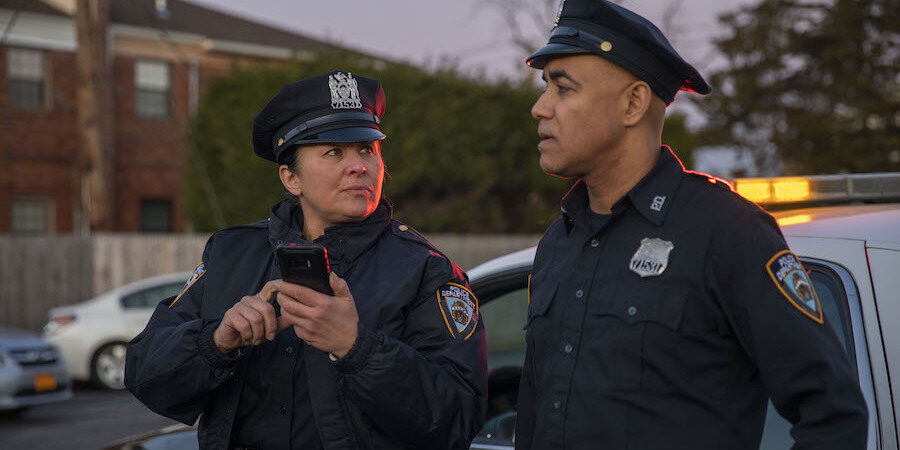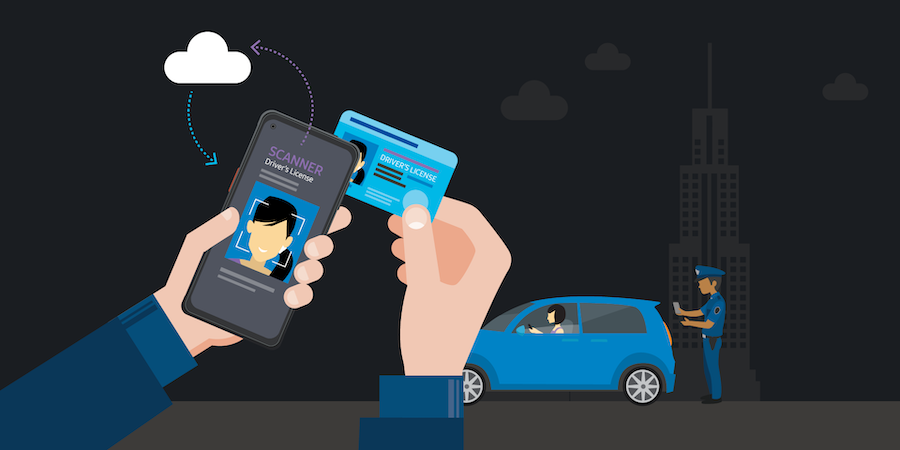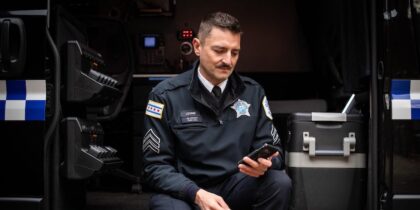Technology now plays a critical role in public safety operations, especially as agencies across the country face both budget and staffing challenges, because technology can serve as a force multiplier. As the role of tech in public safety continues to grow, it’s important for agencies to look toward the future and identify the most promising tech trends. These expanding trends will dramatically expand agencies’ capabilities and improve efficiencies for first responders.
The rapidly growing role of smartphones
Agency smartphone use will continue to expand, with many organizations recognizing the value of issuing a smartphone to every officer. Thanks to their high utility, efficiency and expanded capabilities, smartphones offer a significant return on investment (ROI). In addition to replacing many single-purpose tools (e.g., cameras, voice recorders and e-citation devices), mobile apps can also be used for language translation or pill identification, for example, and provide access to resources ranging from legal procedures to wellness programs. Perhaps most importantly, officers can gain full mobile access to mission-critical information, regardless of their assignment or proximity to a patrol car, allowing them to engage more effectively with their communities.
Public safety software and apps expand mobile capabilities
To keep up with this growing smartphone usage, public safety software vendors are quickly working to integrate mobile capabilities into their computer-aided dispatch (CAD) and records management system (RMS) products. This integration will further empower officers by providing access to real-time information updates — and offer additional benefits such as individual geolocation, locating each officer rather than just the patrol cars. Outfitted with push-to-talk (PTT) functionality and secure information sharing, smartphones have the potential to augment conventional land mobile radio (LMR) systems while providing rich data sources that go far beyond traditional voice communications. As smartphones become the primary computing device for public safety needs — supporting officers in the field, in the patrol vehicle and in the station — this trend will ultimately improve overall efficiency, decrease IT support needs and provide a more intuitive and reliable user experience.
Synergy between body-worn cameras (BWCs) and smartphones
The drive to implement BWCs is unlike anything seen previously in the history of policing. Most law enforcement agencies now use BWCs or have plans to do so, and several states have recently implemented legislation that requires their use. Agencies can save officers sigificant amounts of time by using smartphones to manage their BWCs and the resulting video recordings. Smartphones do much more than complement your BWC rollout; they come with operational benefits that significantly extend the capabilities of the technology. Pairing BWCs with agency-issued smartphones is becoming the norm for public safety operations.
Powerful mobile peripherals
As high-utility smartphones continue to replace single-purpose devices — which are also more expensive — peripheral devices can add specialized capabilities on demand. A thermal imaging camera, for example, or an in-field fingerprint reader, are just two devices that field officers could connect to their smartphone.
Real-time video feeds on smartphones
Agencies that use drone programs or access CCTV systems from public areas such as parks and schools can now provide on-demand live feeds to officers’ smartphones. This is a game changer for officer safety, and can dramatically improve situational awareness. Officers can be deployed more effectively, and in the case of drones, situations can more often be deescalated thanks to a much richer level of mission-critical information made available in real time. As more security cameras are installed and smartphone programs expand, the intersection of these technologies holds great promise as a force multiplier for public safety.
5G: Higher speed and greater mobile capability
Few technologies have received as much attention as 5G, but there isn’t a lot of information on the specific advantages for first responders, other than general promises of super-fast data transfer. However, many areas of public safety will benefit immensely from 5G. Facilitated traffic flow (the green wave for emergency response) requires real-time location awareness for moving vehicles. Real-time video feeds of critical incidents empower decision makers with the information they need as the situation evolves. 5G will also make it possible to livestream BWC videos, allowing for an enhanced level of informed response in rapidly evolving situations or circumstances that prevent an officer from conveying the urgency of what’s happening on the scene. An officer might request immediate assistance, for example, and then no longer be able to communicate.
Artificial intelligence (AI)
AI is arguably the most disruptive and innovative technology in decades. It’s rapidly becoming a key component in many public safety apps because it can efficiently review large amounts of data and instantly find anomalies and trends. Conventional data analysis consists of a person, often a data analyst, manually “pulling” the data. By contrast, AI can serve as an always-on seeker of specific data parameters (e.g., a geographic area with a sudden increase in calls for service) and then “push” that data forward for action.
Your guide to mobilizing law enforcement
Plan and implement a mobile initiative at your agency with this practical roadmap. Download Now
This allows public safety personnel to be aware of problems sooner, resulting in faster and better-informed decisions. Within a public safety context, AI will primarily be in assistive mode, meaning it will alert a human being to something that needs a decision, rather than simply taking a computer-calculated action without human awareness.
AI is already enhancing the effectiveness of video, with analytics that look for predetermined anomalies such as objects left unattended in a secure area, or a vehicle going the wrong direction down a one-way street. AI squarely addresses one of the biggest challenges of new technology: information overload. Human beings no longer have to oversee full-time monitoring of a large bank of video displays when AI-driven analytics are part of the system. AI can synthesize massive amounts of data, acting on user-configured thresholds, thereby providing the most necessary information to everyone who needs to be in the know. AI can also be used to rapidly review large amounts of video from disparate sources and help identify which key elements of an incident warrant further review. This streamlined analysis brings hours of human effort down to just minutes, saving expensive man-hours and even providing key investigative leads.
Overcoming challenges through technology
All of these trends are changing public safety, and the technologies identified are available today. As you implement these solutions, they may complement one another and work synergystically. But technology adoption and utilization will have varying timelines, and varying commitment levels among law enforcement agencies. Some decision makers may adopt a “back to basics” posture due to staffing and funding challenges, while some decision makers will see immense opportunity to mitigate, even overcome, those challenges — and help others effectively embrace new technologies as the necessary force multiplier.
As you consider rolling out new mobile solutions at your agency, ensure your devices are CJIS compliant with this free, comprehensive guide. And get more ideas on how to increase your agency’s efficiency, while staying on budget, from Samsung’s full lineup of public safety technology.









